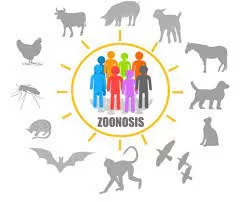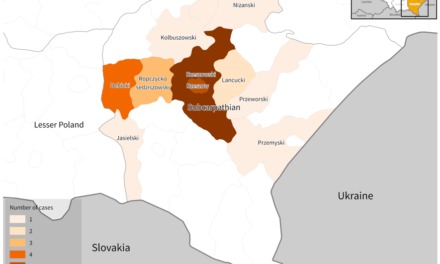Vienna, Austria – Researchers from the Complexity Science Hub and the University of Veterinary Medicine Vienna have unveiled a groundbreaking framework for understanding zoonotic diseases, which impact over two billion people globally each year. This innovative study introduces the concept of a “zoonotic web,” a comprehensive network that maps the intricate relationships between zoonotic agents, their hosts, vectors, food sources, and the surrounding environment.
Zoonotic diseases, transmitted between animals and humans, represent a major public health challenge. Amélie Desvars-Larrive, an epidemiologist involved in the research, emphasized the significance of a holistic approach in managing these risks: “Understanding the complex animal-human-environment interface remains a significant challenge.”
Understanding Transmission Pathways
The transmission of zoonoses can occur through various means, including direct contact with infected animals’ bodily fluids or indirect routes involving vectors such as ticks and mosquitoes. For instance, rabies can spread through bites, while cat scratch disease arises from scratches or skin contact. Moreover, environmental contamination, such as through food and water, plays a critical role in disease spread.
Desvars-Larrive noted, “Our method investigates the interfaces where the exchange of circulating zoonotic pathogens occurs. This goes beyond traditional host-pathogen interactions, considering other infection sources, such as contaminated environments.”
Building the Zoonotic Web
The research team conducted an extensive literature review, analyzing documented interactions between zoonotic sources and pathogens in Austria from 1975 to 2022. This culminated in the creation of the zoonotic web, visualized in an interactive dashboard by CSH data expert Liuhuaying Yang.
Their findings revealed six distinct communities within Austria’s zoonotic network, heavily influenced by human proximity and activity. Notably, the community comprising humans and domesticated species—such as dogs, cats, sheep, and pigs—exhibited the highest zoonotic agent sharing.
The study identified key animals, including wild boar, domestic cats, and certain rodents, as critical “bridging” hosts in this network. “Identifying influential actors within the network can enhance zoonotic disease surveillance programs,” Desvars-Larrive stated.
A Quantitative Approach to One Health
A central challenge for the One Health community is quantifying interactions at the human-animal-environment interface. The One Health approach emphasizes the interconnectedness of human, animal, plant, and environmental health. The research confirmed that zoonotic spillover events are most likely to occur at human-cattle and human-food interfaces, with pathogens like Listeria, Salmonella, and Escherichia coli frequently reported.
Raising Public Awareness
The researchers aim to foster curiosity and educate the public about zoonotic risks. “We all encounter pathogens daily, but only a few lead to illness. It’s crucial to develop awareness about prevention strategies,” Desvars-Larrive urged. For example, proper food handling—such as cleaning utensils between uses—and vigilance after tick bites are vital in mitigating risk.
Conclusion
This pioneering study not only enhances our understanding of zoonotic disease dynamics but also emphasizes the importance of an integrated approach to public health. By mapping the complex interactions within the zoonotic web, researchers hope to pave the way for more effective monitoring and prevention strategies in the face of emerging zoonotic threats.











